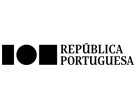


Publication in the Diário da República: Despacho n.º 2435/2023 de 17/02/2023
6 ECTS; 2º Ano, 2º Semestre, 30,0 PL + 30,0 TP + 5,0 OT , Cód. 964573.
Lecturer
- Alexandre José de Magalhães Figueiredo (1)(2)
(1) Docente Responsável
(2) Docente que lecciona
Prerequisites
NA
Objectives
At the end of the semester, the student should be able to understand and independently execute the photographic printing processes covered; Know how to distinguish characteristics and potentialities of the execution of different printing processes; Know how to analyze the constituents of supports and reagents of photosensitive solutions; Understand and interpret variables adjacent to processes such as: contrast, density, veil, reproduction of detail; Raise awareness of the sustainable use of printing techniques, minimizing environmental impact.
Program
Part 1 - Careful production of large format matrices digitally and manipulation in editing software.
Part 2 Charcoal printing. Skills to be acquired: production of photographic emulsion based on colloid and pigment. Production of multiple tests from the same matrix. Control viscosity by manipulating restricting agents according to the desired contrast. Mastery of the technique for transferring the image from the temporary support to the definitive support.
Part 3 - Separation and color analysis. Skills to be acquired: the student will produce monochromatic medium format analog matrices with RGB filtering and subsequent chromatic analysis with projection using the same filters.
Part 4 - Mordaçage Process. Skills to be acquired: the student will produce photographic proofs of gelatin and silver and intervene creatively on the supports using physical and chemical manipulation of the working solutions of this process.
Part 5 Cuprotype printing. Skills to be acquired: the student will adapt the contrast of the negative to the native contrast of the photographic solution. It will manipulate the chemistry of the process in order to obtain alternative color variations to the original red. You will experiment with cuprotyping on different supports, experimenting with their potential.
Part 6 Antotype printing. Skills to be acquired: understand the potential for using plants, spices and fruits to produce photographic images, within a framework of environmental sustainability. Understand the influence of pH variation in solutions on obtaining different colors from the same organic matter.
Part 7 - Compulsorily produce and present a theoretical research work (from a list of topics provided by the teacher) to the class in the last contact class.
Evaluation Methodology
The assessment is continuous and consists of:
Attendance, Participation, Attendance-10%
5 practical exercises - 65%
1 research work-25%
To pass in the Normal Season, the student must obtain a classification of 9.5/20, a value based on the weighted arithmetic average of the assessment elements described above. To be eligible for assessment, the student must have submitted all practical exercises with a minimum grade of 8/20; have carried out and presented the research work with a minimum grade of 8/20.
Students with a final UC grade below 8/20 are excluded from subsequent assessment periods. Students with a final UC grade higher than 8/20 will be able to take advantage of subsequent assessment periods for approval or improvement. Approval or improvement only applies to the theoretical assessment element - written and orally presented research work.
The same methodology is applied to subsequent Assessment Periods.
Bibliography
- Anderson, C. (2019). Cyanotype: The Blueprint in Contemporary Practice (Contemporary Practices in Alternative Process Photography). London: Focal Press
- Fabbri, M. (2011). Anthotypes: Explore the darkroom in your garden and make photographs using plants. Stockholm: Malin Fabbri
- Nadeau, L. (1986). Modern Carbon Printing. London: LNR
- Stulik, D. e Kaplan, A. (2013). The Atlas of Analytical Signatures of Photographic Processes - Collotype. Los Angeles: The Getty Conservation Institute
Teaching Method
Expository, theoretical-practical and practical-laboratory classes. After contextualizing the proposed photographic printing processes, practical experimentation will follow.
Software used in class
Adobe Photoshop
Silverfast
Charthrob
















